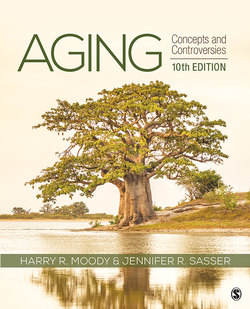Читать книгу Aging - Harry R. Moody - Страница 93
На сайте Литреса книга снята с продажи.
Competing Themes
ОглавлениеChanges in our ideas about health and aging are now being reflected in our social institutions and lifestyles. Change in a prevalent system of thought is often turbulent, and such turbulence is now manifest in health by a set of new movements. Within the medical community, there has been increasing recognition of the importance of preventive medical approaches. Such technical strategies as mass screening have been promoted. New departments of preventive medicine have been developed within medical schools; previously, such efforts were largely carried out within schools of public health. These developments are not entirely successful (screening efforts have proved disappointing, and some departments of preventive medicine have not thrived), but their very creation acknowledges the ferment of new approaches to health care.
The public has asked for more active involvement in consumer choices and for more accurate information on which to base such choices. In response, a self-care movement in health has developed, which now represents a considerable social force. At its best, this movement encourages critical consumption of medical services and increased autonomy from professional dominance. At its worst, the self-care movement takes an adversary stance and would replace professional medical treatment with idiosyncratic folk remedies. Still, the growth of these movements indicates discontent with the prevailing medical orthodoxy.
Recent changes in personal lifestyles have been even more significant. Joggers organize footraces in which tens of thousands compete, and cocktail party conversations concern the number of miles run per week. The number of militant antismokers has grown, and the nonbelievers are being packed into smaller and smaller spaces in the back of the airplane. Such spontaneous social changes are very likely to have constructive effects on health, and we applaud them, but the point is that the phenomenon itself represents a profound changing of the public consciousness.
Within professional medicine, new themes are evident. There is an increased interest in long-term patient outcome as a goal and less interest in correcting the trivial laboratory abnormality that does not materially affect the patient. Benefit-cost studies are sometimes advocated as a solution to the astronomical increases in the cost of medical care. Many observers have pointed out that orthodox medical approaches have reached the area of diminishing returns. The quality of life, rather than its duration, has received increasing emphasis.
Both psychologists and physicians have recently described strong relationships between psychological factors and health, and theories explaining such relationships have been developed that emphasize life crises, helplessness, loss of personal autonomy, depression, and other psychological factors. Correction of some psychological problems, it is implied, will improve health, and indeed the circumstantial evidence that this may be true is quite convincing. Again these approaches are outside the orthodoxy of the medical model.
Two new research areas have recently been emphasized—chronic disease and human aging. Increasingly, researchers recognize the central roles that aging and chronic disease play in our current health problems. The study of aging and chronic disease is oriented toward long-term outcomes, is interdisciplinary, requires preventive strategies, seeks to demonstrate the relevance of psychological factors, and uses lifestyle modification as a major tactic. The student of aging and the student of the diseases of the aged now have a unique opportunity to harmonize the incomplete old orthodoxy and the emerging new themes.
